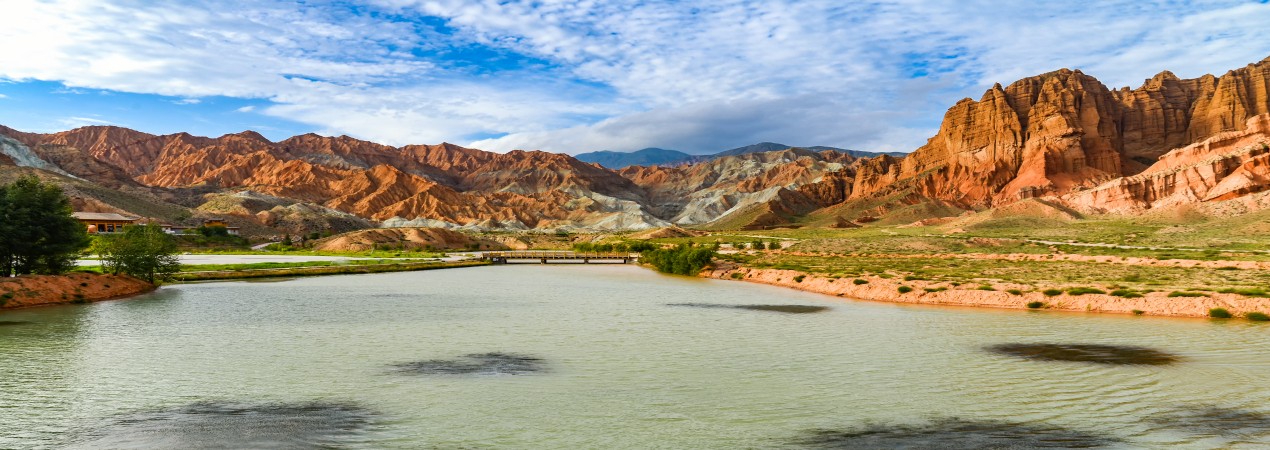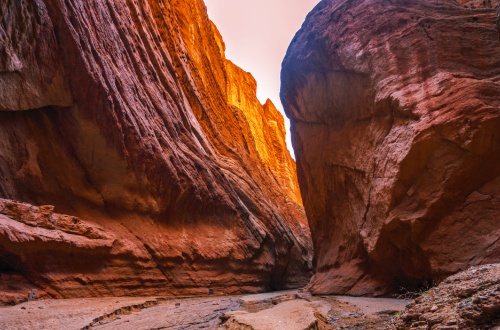Kuqa Grand Canyon

Kuqa Grand Canyon in Xinjiang, also known as the Mysterious Grand Canyon of the Tianshan Mountains, is a typical red Danxia landform and is known as the "Red Cliff". A marvelous natural wonder, it is a must-see when traveling along the Duku Highway (serving as its endpoint).
- Chinese name: 库车大峡谷 Kù Chē Dà Xiá Gǔ
- Suggested time: 2 - 3 hours
- Ticket: 41 yuan per person
- Open hours: 10:00 - 20:00
- The best time to visit: Spring, autumn and winter. In summer, the temperature in the canyon can be extremely high.
- Address: 25 kilometers north of Kuqa City, Aksu Region, Xinjiang Uygur Autonomous Region, China
- How to get there: It is recommended to take a taxi or go on a self-driving tour to reach the scenic area
Highlights of Kuqa Grand Canyon
Yunv Spring
Located deep in the canyon, close to the base of a peak, it sits on the circular top wall of a cave approximately 8 meters high and 4 meters wide, with spring water dripping all year round. In winter, the dripping water freezes into a huge, crystal-clear ice column that is narrow at the top and wide at the bottom, weighing about 500 kilograms. As the ice gradually melts in March and April each year, it is named Yunv Spring.
A'ai Grottoes
The grotto was first built in the mid-Tang Dynasty, an 8th-century period more than 1,300 years ago. It measures 4.6 meters in length from north to south and 3.5 meters in width, covering an area of 16 square meters. Inside the grotto, except for slight damage to the earth layer of the central hall-style murals on the main wall, the "Sixteen Meditations" murals on the left and right walls with Buddha images are all well-preserved. Throughout the mural scrolls, there are 23 inscriptions in Chinese ink and Qiuci script, detailing the names of the donors of certain Buddhas and fully embodying the early integration of Han culture and Qiuci culture.
Educational Value
 Kuqa Grand Canyon
Kuqa Grand CanyonThe canyon is composed of red sandstone and conglomerate dating back 140 million years to the Mesozoic Era. Weathering, water erosion, and tectonic movements such as compression from the Tianshan orogenic belt have shaped winding gullies tens of meters deep. The cliff walls are riddled with folds, faults, and joints. These vividly demonstrate the formation of sedimentary rocks and the transformation and sculpting of the Earth's surface by internal and external forces, providing a vivid example of the theory that "internal and external forces jointly shape the Earth's surface morphology."
Activities to do at Kuqa Grand Canyon
 Geographical Phenomena
Geographical PhenomenaExploring geographical phenomena: Kuqa Grand Canyon has a unique Danxia landform, with its cliff walls composed of colorful sandstones and mudstones in red, yellow, green and other hues. You can wander through it and experience the magical geographical phenomena.
Engaging in photography: The unique landform and ever-changing light and shadow of Kuqa Grand Canyon make it a paradise for photography enthusiasts. You can bring a camera or simply use a mobile phone to take photos of the canyon's full view, details, and the beautiful scenery at sunrise and sunset.
Drop us a line and we'll connect you with the top China expert in no time!